COAST GUARD OFFICER’S
MODEL 1852 SWORD
Gold Bullion sword knot included

Presented is a M1852 sword which is named to DONALD A SPEAR. Senior Grade Lt. Spear was a 30 year Coast Guard veteran and served aboard the USCG Sabago during her second commissioning in Vietnam. The cutter also ran escorts for larger ships of the US Navy.
Here is a link to read further about the extensive history on this fine ship: https://en.wikipedia.org/wiki/USCGC_Sebago_(WHEC-42)
The gold bullion sword knot, or Portepee, is included. The knot weighs 38 grams or 1.22 Troy ounces.
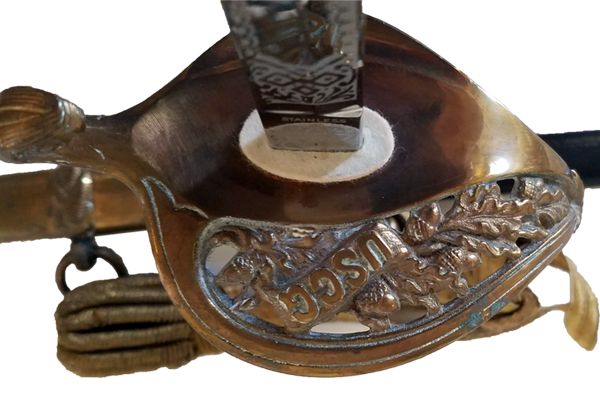
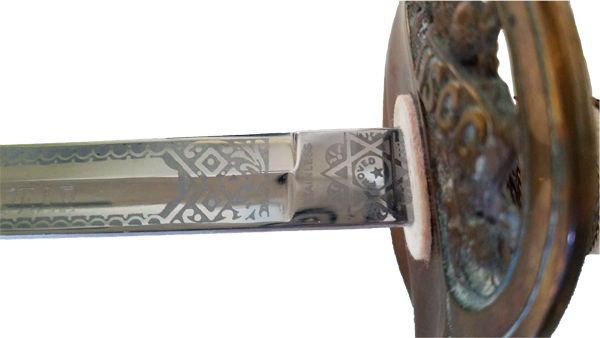
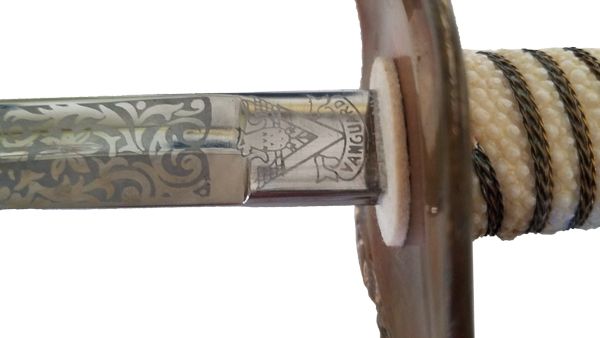
DIMENSIONS: Blade: 3/4 inch wide, 1/8 inch thick, 30 1/2 inches
long, Handle 5 1/4 inches long. Length overall 35 inches. In scabbard 35 7/8 inches.
>Fuller 16 1/2” x 1/2“
Weight sword 2 Lbs 1 1/4 oz
Sword Knot 38 grams or 1.22 Troy ounces
CONDITION: The leather scabbard is original, and like the sword, is in fine condition. The metal work on the grip, pommel, and cross guard, and scabbard are exceptional with sharp and even edges. The three strands of wire wraps over the ray skin cover of the grip tightly. Most of the gilding seems to be worn away due to repeated polishing now replaced with a pleasing patina of age. This sword speaks of the quality of a bygone era.
The design on blade is nickel plated over an acid etched design and is pristine and shows in Near New Condition overall. The country of origin began to appear on blades starting in 1892. In this case, Germany is marked on the upper edge.
There are thirteen wraps on the ray grip in good condition. The single fuller is 16 1/2″. There are 16 stars on the blade along with the Coast Guard symbols, and 14 on the pommel.
In addition to the country of origin, the first is etched on the blade. It is an oval of sixteen stars. Thirteen stars is what was called for by the official 1852 blade design. Later M 1852 swords with 5/8″ blades that we inspected have the same oval, but the count is sixteen stars. 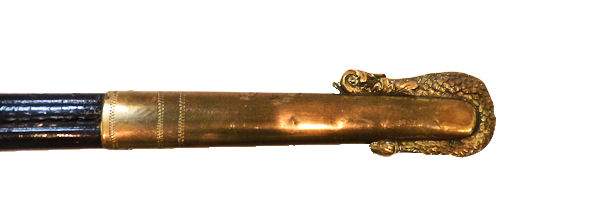
 The only difference between the original Model 1852 sword design shown on the left, and that authorized today, is that in some today, materials such as plastic instead of fish and ray skin, and lower quality metalwork are being used. Not so with this sword that conforms with the original specifications except that the blade was decreased in width as follows:* From 1 1/8 inches to about 1 inch after 1872* To about 3/4 inch in the later 19th Century,* To 5/8 inch in today’s Navy. The regulation of 1852 had the eagle on the pommel facing right when viewed from behind. The use of the officer’s sword was suspended on 15 October 1942 and was not authorized officially again until 1954. Source Naval Historical and Heritage Command.
The only difference between the original Model 1852 sword design shown on the left, and that authorized today, is that in some today, materials such as plastic instead of fish and ray skin, and lower quality metalwork are being used. Not so with this sword that conforms with the original specifications except that the blade was decreased in width as follows:* From 1 1/8 inches to about 1 inch after 1872* To about 3/4 inch in the later 19th Century,* To 5/8 inch in today’s Navy. The regulation of 1852 had the eagle on the pommel facing right when viewed from behind. The use of the officer’s sword was suspended on 15 October 1942 and was not authorized officially again until 1954. Source Naval Historical and Heritage Command.
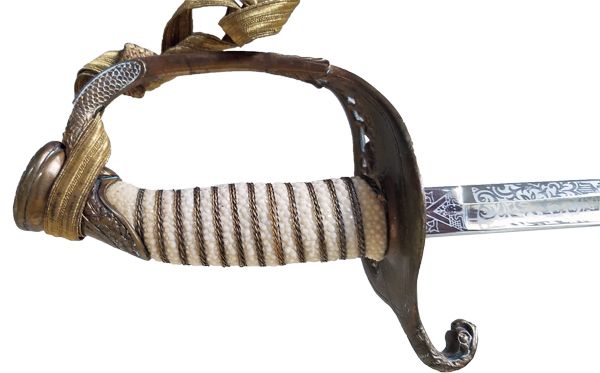
Hilt with heavy brass chasing of very high quality




 The blade is in near perfect condition
The blade is in near perfect condition
